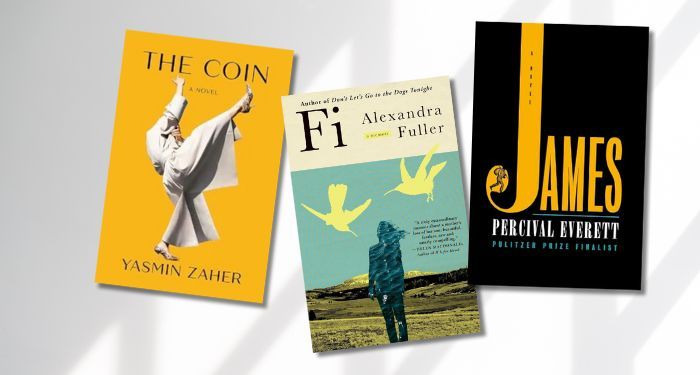 Photo by Jean-Paul Wettstein
Photo by Jean-Paul Wettstein
Today’s post is by editor Tiffany Yates Martin. Join her on Wednesday, October 30, for the online class Irresistible First Chapters.
Studies show people make judgments about others in a tenth of a second. And it often seems like readers, agents, and editors may decide almost as quickly whether to keep reading your story.
But here’s advice I wish I could offer to every writer tying themselves into knots trying to find that magical first line: Let it go. Worry less about creating a first sentence that will shock and awe, and worry more about drawing them into the story one link of the chain at a time.
The truth about first lines
First lines are greatly overrated. Yes, there have been some classics that have been immortalized in the canon, but too many authors get bogged down trying to create that perfect opening sentence and prevent themselves from creating an effective story.
And while the occasional agent or editor may say they stop reading if that first sentence doesn’t smash it, experienced industry professionals who have read hundreds if not thousands of manuscripts know that the opening line is just the first bread crumb. Effective story openings offer a steady trail of crumbs.
Even if you manage to nail a killer lead sentence, a great first line or page doesn’t make up for other deficiencies. I once was enraptured by a bestseller’s brilliant first line, but the story quickly unraveled and I had to force myself to grudge-finish, hoping it would eventually live up to that chef’s kiss of an opening line. (It didn’t.) A perfect first line isn’t going to help you appeal to industry pros or readers any more than Cinderella’s rotten stepsisters were able to fool the prince beyond their surface-level beauty.
Think of your story’s opening as weaving a spell over your reader: the magic starts working from that very first line, but it’s going to take more than that to complete the incantation.
What about first paragraphs?
These introductory lines of your story carry a lot of weight, it’s true. Their job is to give the reader some reason to want to know more. That generally means they should accomplish a number of key things:
introduce a character who interests and attracts the reader enough to want to take a journey with them create a question or uncertainty readers want addressed create some sense of tension that readers want resolved offer an appealing voice the reader wants to spend more time withYour first line may be that shiny flash that first draws us closer to investigate the hook, but it’s the lines and paragraphs that follow that determine whether we bite.
“When I think of my wife, I always think of her head,” begins Nick Dunne in Gone Girl, and as he goes on in that first paragraph to clinically describe its contours and texture under which “you could imagine the skull quite easily,” right away we have a keen sense that something is very not-right here between these two characters.
One of the truest truisms of story is that readers don’t care what’s happening until they care who it’s happening to, and it’s hard to capture readers without some sense of character. We read past that intriguing first line to know more about this person … and find that Nick is just as curious about the contents of that head—meaning his wife’s mind and her thoughts, which are opaque to him despite their marriage, although he does imagine opening her head up to try to follow them.
It’s the normal relationship uncertainties he so badly wants answers to, he assures the increasingly unsettled reader. Questions that may initially make us nod in recognition—“What are you thinking? How are you feeling?”—before Flynn knocks us off of our comfortable perch again: “Who are you? What have we done to each other? What will we do?”
We don’t know, but it’s the rare reader who doesn’t want to find out at this point.
Flynn uses all four of the above techniques for hooking readers: character, tension, question, and voice, enticing us into the story further with every line of those first three paragraphs.
What about first pages?
The intrigue and interest you’ve raised in your first page make a promise to the reader: “Come on in and this story will give you what you want and more.” They promise that these elements and events are meaningful and relevant and will tie together over the course of the story—a promise you must begin to deliver on immediately in the first pages.
The first line of V. E. Schwab’s bestselling book The Invisible Life of Addie LaRue isn’t exactly a world shaker: “The girl wakes up in someone else’s bed.”
It’s intriguing enough to tickle our attention, perhaps, but not a situation that many readers haven’t found themselves in before (it’s okay to admit it).
Neither is the next line, as she lies in crystalline stillness “to hold time like a breath in her chest” in the moments before he wakes, to “keep the memory of their night alive through sheer force of will.” Anyone who’s ever feared that the cold morning light might dissipate the magic of a previous evening might not raise an eyebrow at that either—but the story’s lyrical voice begins to draw the reader closer.
Then come the questions and uncertainties:
He’ll forget, she understands: “They always do.” Now we’re seeing a pattern of behavior that may pique our curiosity: How often does she do this? What is the situation? Who are “they”? And the next paragraph of absolution: “It is never their faults.” Why not? Whose is it? The next, where she observes his body with “details long memorized,” upending readers’ assumptions: if these two are familiar enough for “long memorization” of each other’s bodies, who are the others she refers to—and what exactly is going on?The rest of the first page reveals she met him the previous night; lied about her name “but only because she can’t say her real name”; that she’s taken on several other names in the last month, and two nights ago chose her current one when she was with this same man under another identity.
With every line of the rest of the chapter Schwab offers more detail, fills in a bit more of the picture one brushstroke at a time. Readers are given context that begins to answer some of our initial questions, even as the author introduces more intriguing uncertainties and questions and contradictions that keep us reading to discover more answers.
We’re not just interested in the resolution of ambiguous questions in general. We’re curious about her, trying to put together pieces of this puzzle about this unusual woman, her situation, what she is doing and why.
First-pages faux pas
Too much vagueness: Uncertainty and questions in a reader’s mind are solid devices for snagging their interest—but you must offer enough detail to plant our feet and give us some idea why it matters. Vague, amorphous questions do nothing but frustrate readers; we don’t have enough context to care about the answers. Balance offering enough of the picture to orient readers to the situation and the character while holding back a key puzzle piece or two. Action or conflict without character: Leaping straight into exciting action or conflict seems like a powerful way to start your story with a bang and grab readers’ attention. But if we don’t know enough yet about the players involved, or why this incident is happening or matters to them, then it’s just “stuff” happening, removed from the context that makes readers invest. A car being run off the road on a deserted highway late at night by the lone truck behind them might seem like a high-stakes, high-intensity opening sure to ensnare readers, but until we have some context about who it’s happening to (or who is causing it) and why, it’s like watching a video game without real-life impact or consequences. Character info dump: Don’t overdo it. Readers don’t need the full CV of your character(s) in the opening scene; we just need some reason to want to know more. You can paint in more context little by little as the story moves forward. Think about when you meet someone new: Most of us don’t immediately grill them about their background, lives, or personalities; we begin to figure out who they are as we see what they do, how they act, what they say. But we only begin to engage if something about them intrigues us enough to know more. Unclear perspective: The narrative voice is the reader’s companion and guide throughout the story—whether that of a discrete “narrator” or the main character(s) themselves. If we don’t have some idea what perspective we’re joining the story from, readers will be uncertain of their footing in the story. If the story’s narrative voice is weak or absent or dull, readers may not want to commit to spending hundreds of pages with it—or trust the storyteller.While a unique, lyrical, or appealing voice may snag readers’ interest on its own for a few lines, remember that what you say with your story is more compelling to readers than how you say it. A story’s voice should grow out of and serve the story. The most perfect prose in the world won’t compensate for a story that doesn’t set a hook that makes readers want to read on.
Note from Jane: Join us on Wednesday, October 30, for the online class Irresistible First Chapters.












 Bengali (Bangladesh) ·
Bengali (Bangladesh) ·  English (United States) ·
English (United States) ·